Betty Harris - I'm Gonna Git Ya (Sansu 471)
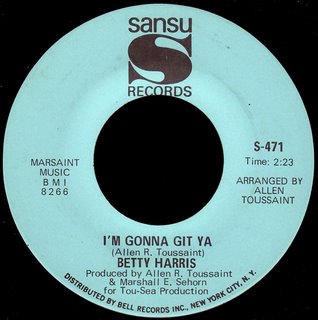
I'm Gonna Git Ya
I am sorry to report the death of yet another music industry legend, Marshall Sehorn. According to Paul Mooney on the Southern Soul Group, Marshall had been ill for some time, and passed away December 5th at a hospital in New Orleans.
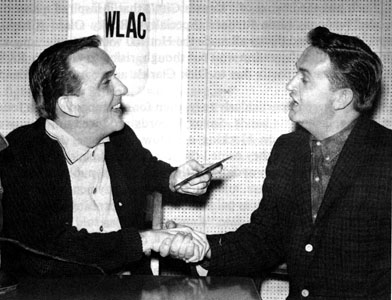
Sehorn was one of the last true 'record men' in the mold of people like Don Robey, Johnny Vincent and Bobby Robinson. He grew up in North Carolina where he "used to ride around all night listening to John R and Hossman over WLAC. they were always playin' blues..." He went on to play guitar in a 'beach music' band, but realized he wasn't good enough to make it as a performer. He introduced himself to Bobby Robinson at a record convention in Miami in 1958, stretching the truth by telling him he was a promoter and a dee-jay. Robinson told him to look him up if he ever got to New York. Sehorn was up there within a week, and through sheer energy and persistance got himself a job as Fire and Fury's Southern promotion man (that's Sehorn on the right in the photo above, pitching a record to WLAC's 'Big Hugh Baby').
 When Sehorn heard Wibert Harrison performing Kansas City with his band down in North Carolina, he convinced Robinson to let him bring him to New York to record it. The single would go on, of course, to become one of the biggest records ever made, topping both the R&B and pop charts in the spring of 1959 and spawning dozens of cover versions. Despite selling over 4 million copies, Robinson found himself embroiled in a lawsuit, with Savoy Records claiming they had a contract on Harrison, and Leiber & Stoller demanding credit as the composers. Nevertheless, Sehorn had delivered the label's biggest seller ever, and Robinson's faith in him as his 'man on the streets' south of the Mason-Dixon line had paid off.
When Sehorn heard Wibert Harrison performing Kansas City with his band down in North Carolina, he convinced Robinson to let him bring him to New York to record it. The single would go on, of course, to become one of the biggest records ever made, topping both the R&B and pop charts in the spring of 1959 and spawning dozens of cover versions. Despite selling over 4 million copies, Robinson found himself embroiled in a lawsuit, with Savoy Records claiming they had a contract on Harrison, and Leiber & Stoller demanding credit as the composers. Nevertheless, Sehorn had delivered the label's biggest seller ever, and Robinson's faith in him as his 'man on the streets' south of the Mason-Dixon line had paid off.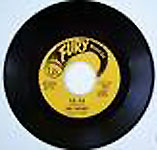 On a trip to New Orleans in 1960 to cut Bobby Marchan's amazing There Is Something On Your Mind, Sehorn met Allen Toussaint. Marshall loved the city, and convinced Bobby Robinson to come to Sugar Town to meet local phenom Lee Dorsey the following year. As the story goes, they hit it off, and Robinson and Lee took a kids' Ninth Ward street chant and worked up Ya-Ya over a couple of beers. Sehorn convinced Toussaint to help him with the arrangement, even though he couldn't play on the record due to his contract with Joe Banashak. Using local pianist Marcel Richardson and members of Harold Battiste's AFO Studio Combo instead, he delivered yet another giant million seller to the company in the summer of 1961. Marshall continued to run sessions in New Orleans for the label until it folded in 1963 due to a series of financial mishaps.
On a trip to New Orleans in 1960 to cut Bobby Marchan's amazing There Is Something On Your Mind, Sehorn met Allen Toussaint. Marshall loved the city, and convinced Bobby Robinson to come to Sugar Town to meet local phenom Lee Dorsey the following year. As the story goes, they hit it off, and Robinson and Lee took a kids' Ninth Ward street chant and worked up Ya-Ya over a couple of beers. Sehorn convinced Toussaint to help him with the arrangement, even though he couldn't play on the record due to his contract with Joe Banashak. Using local pianist Marcel Richardson and members of Harold Battiste's AFO Studio Combo instead, he delivered yet another giant million seller to the company in the summer of 1961. Marshall continued to run sessions in New Orleans for the label until it folded in 1963 due to a series of financial mishaps.Sehorn has said that he 'learned the ropes' of the business from Robinson, and a 'google' on him certainly bears that out. He is listed as a co-writer of Sonny Boy Wiiliamson's One Way Out, the song the Allman Brothers made famous on their Fillmore East album. A look at the BMI Repertoire Database shows him listed as co-writer of some 41 other tunes - his 'co-writers' being Fire/Fury artists like Wilbert Harrison, Elmore James and Lightnin' Hopkins. He had created his own publishing company (Rhinelander Music) by the early sixties and, in what was standard practice for record companies in those days, took a piece of the composer's royalties for himself. Like Sehorn said, he learned from the best, with Robinson (as we've mentioned on soul detective) being listed as writer or co-writer of some 368 titles.
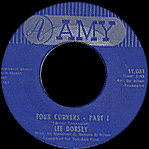 Now that Robinson was out of the picture, Marshall was on his own and approached Allen Toussaint about doing some arrangements for Lee Dorsey. He had hooked up with Southland Distributors in Atlanta, and wanted to record some 'nonsense' type songs to try and re-capture the success of Ya-Ya. Toussaint did him one better and wrote the amazing Ride Your Pony for him before they entered the studio. With the record 'in the can' and ready to go, the owner of Southland died suddenly, and left Sehorn looking for a label to release it on. His New York connections paid off, and it was picked up by Larry Utall who released it on his AMY subsidiary. When it broke into the top ten R&B (top 40 pop) in the summer of 1965, Sehorn asked Toussaint to come to New York and back up Lee at the Apollo Theatre. That was where the idea of a partnership was born, and by the end of the year they had formed 'SANSU Enterprises'.
Now that Robinson was out of the picture, Marshall was on his own and approached Allen Toussaint about doing some arrangements for Lee Dorsey. He had hooked up with Southland Distributors in Atlanta, and wanted to record some 'nonsense' type songs to try and re-capture the success of Ya-Ya. Toussaint did him one better and wrote the amazing Ride Your Pony for him before they entered the studio. With the record 'in the can' and ready to go, the owner of Southland died suddenly, and left Sehorn looking for a label to release it on. His New York connections paid off, and it was picked up by Larry Utall who released it on his AMY subsidiary. When it broke into the top ten R&B (top 40 pop) in the summer of 1965, Sehorn asked Toussaint to come to New York and back up Lee at the Apollo Theatre. That was where the idea of a partnership was born, and by the end of the year they had formed 'SANSU Enterprises'. The way I heard it, the name comes from an inside studio musician's joke. Allen's nickname around town when he was coming up had been 'two cents', a play on his last name. They figured that with all the hits he was having lately, they'd better start calling him 'five cents'... anyway, Sansu is the phonetic English pronunciation of the creole French for five cents - 'Cinq Sous'. Apparently a big fan of those kind of acronyms, the new partners went on to form a publishing company called 'Mar-Saint' and subsidiary labels 'Tou-Sea' and 'DEESU' (ten cents?).
The way I heard it, the name comes from an inside studio musician's joke. Allen's nickname around town when he was coming up had been 'two cents', a play on his last name. They figured that with all the hits he was having lately, they'd better start calling him 'five cents'... anyway, Sansu is the phonetic English pronunciation of the creole French for five cents - 'Cinq Sous'. Apparently a big fan of those kind of acronyms, the new partners went on to form a publishing company called 'Mar-Saint' and subsidiary labels 'Tou-Sea' and 'DEESU' (ten cents?).Sehorn was able to release some 'product' right away on things he had the rights to (or claimed to) from his Fire days (like Wilbert Harrison and Maurice Williams on Deesu), and worked out a deal with Cosimo Matassa to lease material by other New York based acts that were recording for Robinson's Enjoy label (like Joe Haywood) to his own White Cliffs imprint.
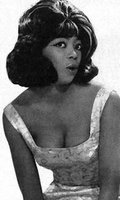 The first artist to record on Sansu was the great Betty Harris. Betty had hit the top ten with her 1963 version of Solomon Burke's Cry To Me (on Jubilee), and met Toussaint while on tour in 1965. She would record the great I'm Evil Tonight for the label later that year. It would be released again two years later as the B side of her superb top 20 Sansu hit Nearer To You. Today's awesome selection was the flip of the equally great follow-up record Can't Last Much Longer, and hails from late 1967. It's got this proto-funk kind of groove happenin', and may just be the first side to feature most of the Meters as the backing band. I love the little Professor Longhair roll Toussaint does on the piano there on the break, da real deal! For a typically fantastic overview of Betty's recording career, I'd like to refer you at this point to Larry Grogan's Funky 16 Corners Webzine, check it out.
The first artist to record on Sansu was the great Betty Harris. Betty had hit the top ten with her 1963 version of Solomon Burke's Cry To Me (on Jubilee), and met Toussaint while on tour in 1965. She would record the great I'm Evil Tonight for the label later that year. It would be released again two years later as the B side of her superb top 20 Sansu hit Nearer To You. Today's awesome selection was the flip of the equally great follow-up record Can't Last Much Longer, and hails from late 1967. It's got this proto-funk kind of groove happenin', and may just be the first side to feature most of the Meters as the backing band. I love the little Professor Longhair roll Toussaint does on the piano there on the break, da real deal! For a typically fantastic overview of Betty's recording career, I'd like to refer you at this point to Larry Grogan's Funky 16 Corners Webzine, check it out.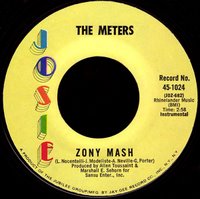 As we've discussed before, Sehorn and Toussaint caught the Neville Sounds playing down in the French Quarter, and hired the rhythm section as their own version of Booker T & the MGs in 1968. They would go on to back-up so many great artists for the label, as well as recording some of the coolest records ever as The Meters (it was Sehorn's NYC connections that got them signed with Josie, and consequently Cissy Strut actually broke first in New York!).
As we've discussed before, Sehorn and Toussaint caught the Neville Sounds playing down in the French Quarter, and hired the rhythm section as their own version of Booker T & the MGs in 1968. They would go on to back-up so many great artists for the label, as well as recording some of the coolest records ever as The Meters (it was Sehorn's NYC connections that got them signed with Josie, and consequently Cissy Strut actually broke first in New York!).When the proverbial shit hit the fan with the collapse of Cosimo Matassa's Dover Records Distributing and the seizure of his landmark studio, Sansu was like the 'last man standing' in New Orleans. Sehorn pulled together the financing to build their own plant, the legendary Sea-Saint Studio on Clematis Avenue. The absolutely fantastic albums that were produced there are the stuff that dreams are made of, man.
There are the stories, of course. Stories of an unidentified member of The Meters showing up at the studio with an axe because he wasn't getting paid... of Betty Harris maintaining that the reason she turned her back on the whole thing in 1970 was because Sehorn never paid her a dime. This is the old time 'record man' in him, doing it as he was taught 'back in the day'...
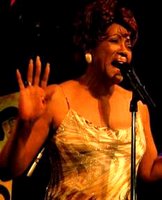 In the wake of Hurricane Katrina, Betty Harris has returned to the stage and, by all reports, sounds as great as ever. When she was in Australia performing at a benefit concert last year, she noticed a compilation of her Sansu material in a record shop. She contacted the company that had released it (AIM records) and asked them who licensed the songs to them. They directed her (and her attorney) to a firm called Gulf Coast Music in Louisiana. This turned out to be a holding company set up by the Federal Government to manage Sehorn's music related assets after he declared bankruptcy in the mid-90s. Under the threat of litigation, the company agreed to award Betty's Sansu masters, and all subsequent rights to them, to her. In the middle of all of this, Christine Aguilera sampled Nearer To You on her Back To Basics album (a real hatchet job in my opinion). Aguilera's record company (Sony) claims to have licensed the track from Charly in the UK, and has refused to recognize Harris' claim to it so far. There is a lawsuit pending. Betty just wants to, finally, get paid.
In the wake of Hurricane Katrina, Betty Harris has returned to the stage and, by all reports, sounds as great as ever. When she was in Australia performing at a benefit concert last year, she noticed a compilation of her Sansu material in a record shop. She contacted the company that had released it (AIM records) and asked them who licensed the songs to them. They directed her (and her attorney) to a firm called Gulf Coast Music in Louisiana. This turned out to be a holding company set up by the Federal Government to manage Sehorn's music related assets after he declared bankruptcy in the mid-90s. Under the threat of litigation, the company agreed to award Betty's Sansu masters, and all subsequent rights to them, to her. In the middle of all of this, Christine Aguilera sampled Nearer To You on her Back To Basics album (a real hatchet job in my opinion). Aguilera's record company (Sony) claims to have licensed the track from Charly in the UK, and has refused to recognize Harris' claim to it so far. There is a lawsuit pending. Betty just wants to, finally, get paid.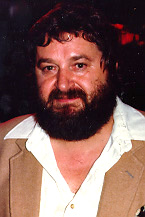 Although it is Allen Toussaint who (deservedly) gets the credit as the producer of so many great New Orleans records, if you look closely the credits invariably say; "Produced By Allen R. Toussaint & Marshall E. Sehorn". There is, of course, no way of knowing what his actual contributions may have been in the studio on any given recording, but the fact that he 'took care of business' and allowed Toussaint the space to create, is really enough, I guess. Without him, music as we know it would not exist.
Although it is Allen Toussaint who (deservedly) gets the credit as the producer of so many great New Orleans records, if you look closely the credits invariably say; "Produced By Allen R. Toussaint & Marshall E. Sehorn". There is, of course, no way of knowing what his actual contributions may have been in the studio on any given recording, but the fact that he 'took care of business' and allowed Toussaint the space to create, is really enough, I guess. Without him, music as we know it would not exist.I'd like to thank him for that.

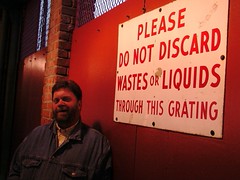





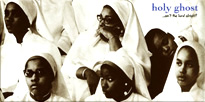
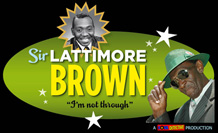






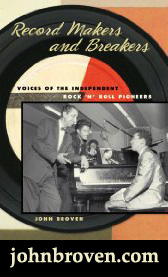


8 Comments:
Hey everybody. I wanted to share this email I received from Fred Wilhelms, Betty's lawyer:
"Just to start out, I want you to know I am Betty Harris' lawyer, but you're not in any trouble with her, or me. I just want to correct some misstatements in your post.
I'm the one who got Betty her Sansu masters back from Gulf Coast Music. GCM was the entity set up by the Federal court to handle Sehorn's music assets when he declared bankruptcy in the mid-90s as a result of several judgments against him for bootlegging the Chess
catalog.
There was no lawsuit against GCM. Gulf Coast realized that Betty had a superior claim to the masters because they had no proof she had ever been paid royalties, and the documents under which GCM claimed rights were of dubious legality. (Let's just say that, among other problems they included "rights" to her Jubilee masters, which came as a surprise to Rhino and EMI, who actually own them.) Rather than face litigation (which could have exposed many other similar problems, GCM
transferred their rights to Betty.
As to the Christine Aguilera sample, we are about to file suit against her and Sony/BMG because they refuse to recognize Betty's right to the masters. Sony/BMG had originally licensed "Nearer To You" from a branch of the Charly Records empire. When I let Sony know that Charly
really didn't have legal right to license the song (which they claimed under a dubious license from Sehorn, of course), Sony just refused to pay anyone. There has been a report of Betty getting paid, but that was the result of a misunderstanding by the reporter. Sony is holding the money, hoping that she can settle with Charly, which isn't goingto happen. Hence the lawsuit.
I expect Betty to eventually win against Sony, which should result in, far and away, her biggest payday ever.
What I think is even better news is that she is back in the studio. She'll be finishing off the vocals on a new CD tomorrow, and we look to a release of all new material sometime next year, as well as a legitimate compilation of the Sansu recordings."
Thank you Fred for clarifying the legal details, and we look forward to the new material!
Great tribute to Marshall Sehorn, and an amazing job of (almost) untangling the complicated relationships among a great bunch of performers, producers, writers, and record men. But mostly, thanks for sharing some wonderful music that I never would have heard but for you (and funky16corners).
Great piece, Red. And the message from Mr. Wilhems is very enlightening, too. More aritists need representation like that! I've got another Sehorn-related post up at HOTG. Keep up the always superb work, dude.
Excellent piece on Marshall Sehorn, whose death seems to have been neglected by the mainstream press.
I hope Betty gets what she deserves. Saw her at the Ponderosa Stomp last year and thought she was great.
You can see my blog at http://thevinylword.blogspot.com/
Cool post Red (as always). I hadn't heard about Sehorn, but then I haven't been surfing the net much these days.
I suspect there are elements to under-the-table aspects of the New Orleans music business that will never be known, and I suspect that Sehorns fingerprints are all over them.
Hi Red
I hope it's OK but I cut & pasted your wonderful piece on Marshall Sehorn on Charlie Gillett's "Sound of the World" Feedback Forum:http://tinyurl.com/yz9a4q
naturally with full acknowledgment to yourself. It's generated quite a few comments, including the response from Fred (above). Sorry not to have asked your agreement in advance.
I love your blog - great music, wonderful background stories. Thanks!
Norman Druker (London)
thanks for the entry. MARSHALL was was my great-uncle and i enjoyed seeing that some folks understand what he did for music. thanks travis sehorn.
I was doing a search on Marshall Sehorn and came upon your blog. I enjoyed your post on his life. I never knew so much about what he did in the music industry. Your post has been very informative. His mother and my grandmother were sisters. I remeber him from hearing stories from my grandmother and mother. Thank you
Mickie (North Carolina)
Post a Comment
<< Home